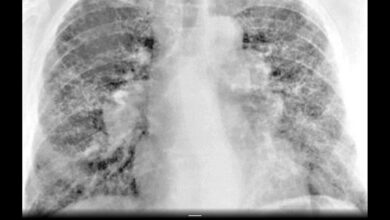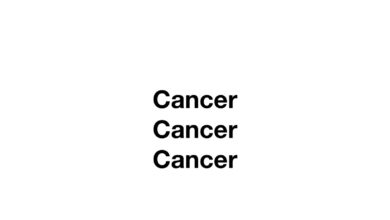CANCER CASES INCREASE

In the decade between 2010 and 2020, cancer cases and cancer deaths increased 26.3% and 20.9%, respectively, worldwide. This is a startling figure when you think of the effort and money directed toward cancer prevention and detection.
The article referenced here does not single out the United States so it’s difficult to know how we’re doing compared to the rest of the world. The study was based on “the estimated cancer burden and trends for 204 countries and territories across Sociodemographic Index groupings,” or SDI. The SDI is a “composite measure of education levels, income per capita, and fertility rates among those younger than 25 years.” The higher the SDI quintile, the more “developed” is the country.
When non-melanoma skin cancers were eliminated, in 2019 alone, there were about 17 million new cancer cases and 10 million deaths. Between 2010 and 2020, cases and deaths increased by 26.3% and 20.9%, as stated above.
The conclusion of this article predicts that over the next 20 years, more than two-thirds of cancer cases will occur in low-and middle-income countries. These are the lesser-developed countries that have “disparities in cancer prevention, care, and control” compared to more developed societies.
I suppose if I searched hard enough, I could find the figures for the U.S. for comparison. I would think U.S. statistics are better than the numbers reported here. Lower socioeconomic populations have limited, or no, access to medical care, don’t practice preventive care, don’t receive health education information, and don’t have readily available screenings. It’s also conceivable, in third-world countries, many folks who die of cancer are thought to have something else. The diagnosis of cancer is never made. These numbers may be inaccurately low.
The prevalence of cancer diagnoses really depends on a person’s self-awareness, their access to care, and their personal responsibility for the detection and treatment of the disease. Self-awareness, also called insight, is the term used to define a person’s ability to know there is something wrong with their physical or emotional state of being. Instead of ignoring an unusual pain, making excuses for fatigue or weight loss, or minimizing the importance of a nasty cough, an insightful person will intellectually decide something is wrong and seek to find an explanation for the symptom.
Then comes the issue of access to care. If you don’t have a doctor in your town, or live in a country with a low ratio of doctors to the population, or have no means of transportation, it will be very difficult for you to get to a person or place where the problem can be attended. Millions of people, especially in poverty-stricken areas of Africa and Central America, will never get to a place of care in time to be of benefit, if they go at all. Even in the U.S. this is a problem minority citizens experience daily. Their only source of care is the county hospital or neighborhood clinic where seeing the same doctor every visit is a luxury. Unless accurate records are kept and test results followed up, continuity of care is disrupted and important information easily gets overlooked.
The final factor is personal responsibility. For a good outcome, it’s very important for the patient to keep appointments, follow through with diagnostic studies, and adhere to treatment guidelines. If you need to have 44 sessions of radiation therapy, you show up for all 44. If you have chemotherapy every three weeks, no matter how sick it makes you, you comply until the treatment is completed. Failure to follow the protocol only hurts your chance of a remission.
Cure rates for many cancers have improved greatly. But unfortunately, many still elude early detection and successful treatment. Lung cancer and cancers of the pancreas, bile ducts, and liver still have ominous prognoses. The five-year survival for lung cancer is 18.6% and for pancreatic cancer is less than 10%. That means that 5 years after diagnosis, fewer than 1 in 10 pancreatic cancer patients, and 1 in 5 lung cancer patients, are still alive. Fortunately, survival statistics for other cancers have improved. Colorectal (64.5%), breast (89.6%), and prostate (98%) all have improved five-year survival rates because of a major focus on early detection programs. But early detection is only successful if the patient has access to a diagnostic facility and schedules the procedures needed to make a diagnosis. Also, those folks who have suspicious symptoms must have the insight to recognize they are abnormal and the personal responsibility to act upon them to rule out cancer.
Worldwide, cancer cases and cancer deaths have increased, but in the U.S., mammoth efforts have been made to reduce that trend. Just as there is a maldistribution of physicians, there is also unequal access to ongoing medical care for a large percentage of Americans. That problem translates into a higher cancer incidence in Black men than in Asian or White men. This “inequity” generates all sorts of solutions, upon which social scientists, politicians, and healthcare policy makers can’t agree.
The American Cancer Society (ACS) predicts that “about 1.9 million new cancer cases and 609,360 deaths will occur this year, in the U.S.,” both slight increases from 2021. Overall, the risk of dying from cancer in the U.S. has decreased by 32%. This improvement is attributable to advances in cancer detection and treatment, and the major reduction in smoking the past 20-25 years.
The answer to the inequality problem is beyond my knowledge, but I know in my 40 years of patient care, I did my very best to help my patients gain insight into their symptoms, access the care care they needed, and guide them through diagnosis and treatment protocols.
References: News from the JAMA Network. Slomski A. Global Cancer Burden Grew from 2010 to 2019. JAMA 2022 Mar 1;327(9):804.
Kocarnik JM. Cancer Incidence, Mortality, Years of Life Lost, Years Lived with Disability, and Disability-adjusted Life Years for 29 Cancer Groups from 2010 to 2019. JAMA Oncol 2021 Dec 30.
Suran M. “How Cancer will Affect the U.S. in 2022” JAMA 2022 Mar 8;327(10):907-908.





Very
I was very interested in your article on cancer increases. I was diagnosed last fall with CLL. I have a hematologist in Indianapolis, and Tom also took me to Mayo Clinic in Rochester recently. I get blood work done every three months, and they are going to share information. As of now, I am not taking any medication! I get easily fatigued and my bones ache, but otherwise I am doing well, and going to keep being optimistic! Hope they two are doing well and enjoying retirement! ❤️Carol
Carol, Thanks for your comments. Typically, CLL, which I assume stands for Chronic Lymphocytic Leukemia, is normally fairly benign. I had at least 3 other patients who had it. One woman had it for 25 years, before it changed to Acute leukemia, and another man had it for 10 years, had white blood cell counts as high as 84,000 (normal is 5000 to 10,000), but died of heart disease. Who is your hematologist? If you’re having symptoms, you might need treatment. Good luck.